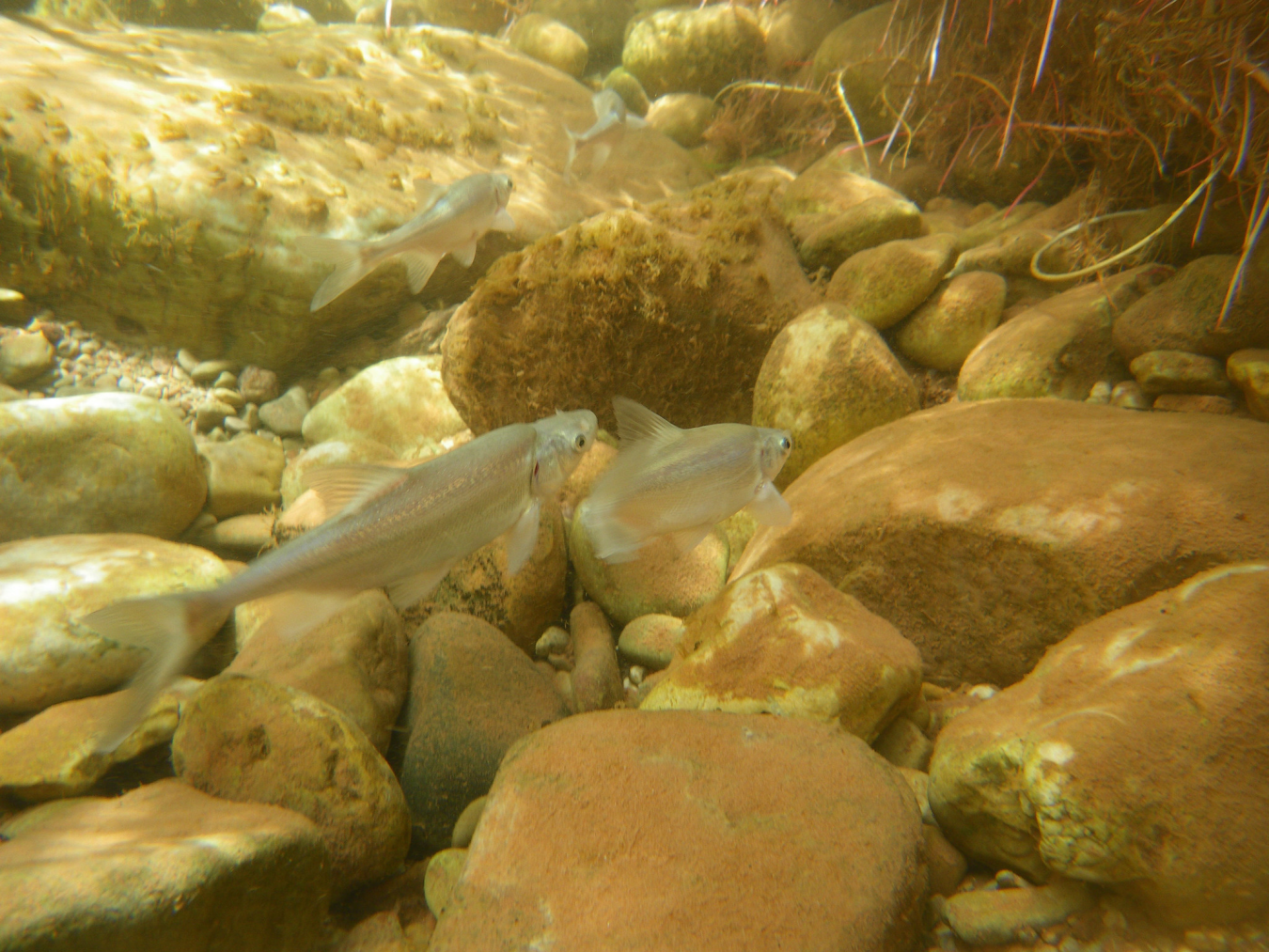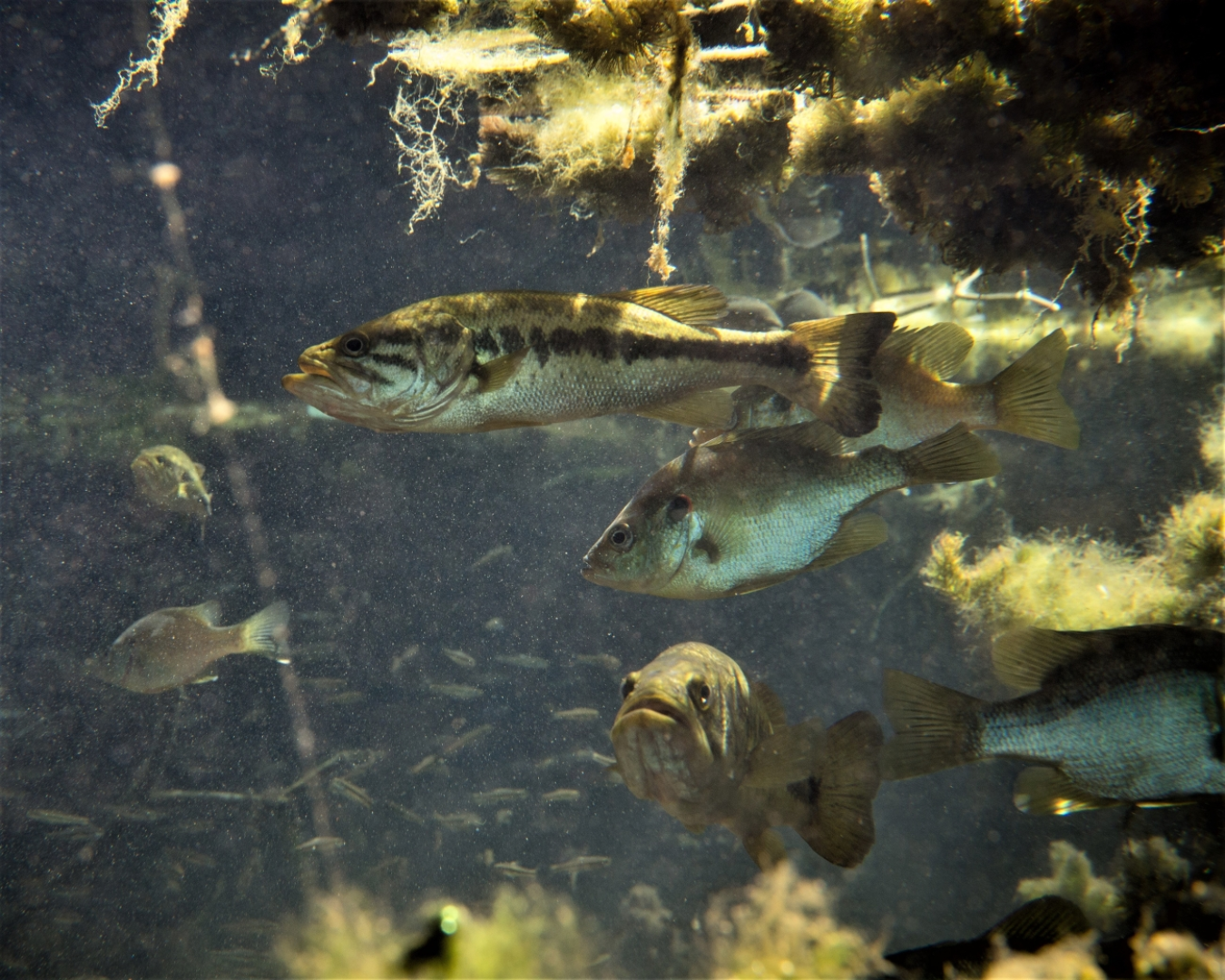New research from the HydroWIRES Initiative investigates ways to plan water releases to support both energy and environment objectives, thus reducing the environmental impact of hydropower facilities and supporting power generation.
Water Power Technologies Office
May 22, 2024As the grid evolves to incorporate more variable renewable energy sources, like solar power and wind energy, hydropower will play a key role in ensuring it remains reliable and stable. A major challenge for hydropower is how to meet growing energy demand while mitigating environmental impacts. But what if, rather than identifying ways to mitigate impacts, energy and environment priorities could both be optimized? Research from the HydroWIRES Initiative, led by the U.S. Department of Energy’s (DOE's) Water Power Technologies Office (WPTO), investigates ways to plan water releases to support both energy and environment objectives, thus reducing the environmental impact of hydropower facilities and supporting power generation.
“There’s a legacy paradigm in hydropower that pits power generation against environmental mitigation and protection measures, but it doesn’t have to be like that. Our research shows that co-optimizing energy and environmental outcomes can lead to better outcomes in both areas,” explained Brenda Pracheil, Pacific Northwest National Laboratory (PNNL) Earth scientist, fisheries biologist, and lead author of a report on co-optimization of hydropower outcomes.
Hydropower is an abundant, flexible energy source that provides nearly 30% of the country’s utility-scale renewable energy, but hydropower facilities also affect the environment and natural resources. To that end, new HydroWIRES research from PNNL, Oak Ridge National Laboratory, National Renewable Energy Laboratory, Idaho National Laboratory, Argonne National Laboratory, and RTI International modeled operational approaches that optimize energy and environmental protection outcomes.
Focusing on Both Energy and Environment Priorities
Hydropower’s ability to quickly increase or decrease power generation to meet changing electrical grid demand is tied to adjustable hydropower flows, or the amount of water flowing through a hydropower facility at any given time. More water released to flow through turbines means more power generated at a hydroelectric facility.
But power demand is only one factor that determines flows downstream of hydropower facilities. Minimum or other flow requirements are instituted during certain seasons, days, or hours to meet specific environmental priorities, such as supporting fish migrations through facilities or providing sufficient water to maintain fish spawning and growth habitats. These conditions are included in a hydropower facility’s operational plan or license.
“We found that the environmental requirements for hydropower flows, such as minimum flows and restrictions on how quickly water flows can be increased and decreased over a given time, are most likely to limit operational flexibility during summer and the middle of the day, which in some cases is when the grid is most likely to experience stress,” explained Vishvas Chalishazar, PNNL electrical engineer, grid resilience team lead, and co-author on the report. “But by co-optimizing energy and environmental outcomes, it’s possible to create opportunities for energy-environment win-wins.”

One such potential win-win is highlighted in the report’s Glen Canyon Dam case study. Glen Canyon Dam is located on the lower Colorado River in Arizona and accounts for about 75% of energy resources in the Colorado River Storage Project, which provides power to customers across seven Western states. The lower Colorado River is also home to the Humpback chub, an endangered native fish with key river habitats located downstream of the dam.
Water released from Glen Canyon Dam comes from deep within the reservoir and is much colder than the warm waters where humpback chub rear their young. Reducing the volume of water released from the reservoir in summer months allows for warmer water temperatures downstream for these fish, which can support higher growth rates of juvenile humpback chub. But lower water flows also mean less power generation at a time when summer energy demand for air conditioning is high. This can make it challenging to balance power generation with environmental considerations at the Glen Canyon Dam.
However, the research team used its modeling approach to simulate thousands of different conditions and operating guidelines to find scenarios that would result in energy-environment win-wins. Modeling showed that changing when water is released during the day or even over the course of a season can lead to increased growth of the endangered fish species and support hydropower.
Optimizing for the Future
Another example of the potential benefit of optimizing energy and environmental priorities is highlighted in a case study on the Yadkin-Pee Dee River Basin. Yadkin-Pee Dee is home to six hydropower facilities in a river basin that runs from North Carolina to South Carolina. It exemplifies many of the common challenges in modern hydropower operations: a diverse multi-ownership landscape, the need to balance power generation across facilities with regional energy demand, and natural resource concerns related to water supply and quality, fish passage, and recreation.

Using simulations of future water flow and temperature, the research team examined operational constraints to understand relationships between maximizing the value of power generation and survival of young largemouth bass, an important game fish.
The team found model scenarios that generated more valuable energy than current operating models while meeting environmental priorities for reproduction and early survival of largemouth bass. For example, restricting rapid changes in water flows to daytime hours supported bass survival and still allowed for more flexible power generation during the day to meet energy demand. Importantly, simulations that coordinated operations across all facilities in the river basin allowed for greater flexibility.
Optimizing for Energy and Environment is Actionable
As the grid relies more on variable renewable energy sources, grid operators must be flexible to quickly react to changing energy demand. However, greater reliance on hydropower for that flexible generation increases the need to balance energy and environment outcomes. There may not always be energy-environment win-win opportunities, but the optimization approach can help identify more options for informed decision-making.
To support that effort, the research team developed a linkage mapping tool that helps hydropower planners and operators visualize energy and environmental priorities such as fish passage, water supply, or flood control. The tool connects all the possible environmental and energy outcomes at various points in a hydropower system, allowing users to filter for specific goals and outcomes relevant to their facility and identify tools available to tackle challenges. The tool can also paint a holistic picture of the potential impacts of certain operational decisions. This can help to communicate the impacts of different decisions during planning and regulatory discussions.
Planning to support energy and environment priorities will require new operational tools and approaches to help hydropower owners and operators, Tribes, federal and state regulators, and environmental organizations involved in hydropower environmental regulation identify opportunities. This research shows that energy-environment win-wins are possible and actionable.
Stay up to date with the latest hydropower funding opportunities, events, and news by subscribing to the monthly Water Wire and the bimonthly Hydro Headlines newsletters.

